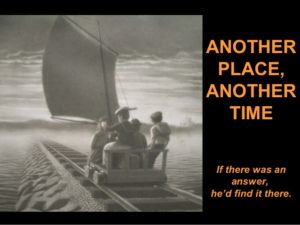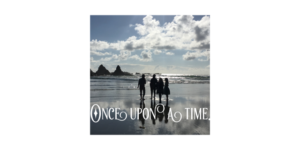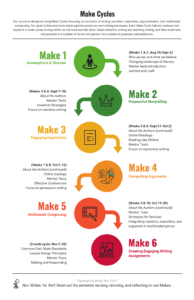Make Cycle 2
 Make Cycle 2: Purposeful Storytelling
Make Cycle 2: Purposeful Storytelling
Weeks 3 & 4: Sept 8-20
You are doing beautiful work with your names, stories of your birth, who you are, your identities, and your hopes in your poems and Storyjumper tales in our first Make Cycle. Bravo! Thank you for jumping in to our work! I look forward to spending time with your makes from Make Cycle 1!
For Make Cycle 2, we will focus closely on storytelling. Some of you may decide to build on the stories of who you are and what you care about. Our goal for this cycle is to think about the power of telling stories and to consider how we generate ideas for writing: our own writing and support for students’ writing.
In a nutshell (extended descriptions below):
Make Cycle 2: week 3
- Reading: About the Authors and watching Jason Reynold’s Dear Dreamer video
- By Wednesday, Sept 9: Read Chapter 1 from About the Authors “Writing Workshop: A Happy Place Where We Make Stuff” (p. 1-22) and Unit of Study A: “The Kinds of Things Writer’s Make…” (p. 155-158) and Unit of Study B: “Where Writers Get Ideas” (p. 159-164) and respond to prompts.
- By Sunday, Sept 13: watch/respond to Jason Reynold’s Dear Dreamer video and try out some lists
Make Cycle 2: week 4
- Reading: mentor texts and completing Make 2
- By Wednesday, Sept 16: Read mentor texts (The Dot, What Do You Do With an Idea?, The Mysteries of Harris Burdick and “Moving Vines”) and respond.
- By Sunday, Sept 20: Make due for Make Cycle 2: Our Stories.
Are you reading my emails and watching video updates for more context?
Make Cycle Two: first week Sept 8-13
By Wednesday, Sept 10, read:
- Chapter 1 from About the Authors “Writing Workshop: A Happy Place Where We Make Stuff” (p. 1-22)
- Unit of Study A: “The Kinds of Things Writer’s Make…” (p. 155-158)
- Unit of Study B: “Where Writers Get Ideas” (p. 159-164)
Then, please respond:
Notice the prompt has multiple parts:
After reading Chapter 1 and the A & B Units of Study from About the Authors, pay close attention to the examples from the children’s writing: What did you notice about their writing? What surprised you about the examples? What made you nervous or excited (or both) about teaching writing to little kids?
Then, on pages 4-5, the authors give us a bulleted list of the things they notice about Josh’s writing. Did you notice those same features? What does a teacher need to know in order to do this kind of close reading of children’s writing? What do you feel ready to do and where are your concerns as a future teacher?
Finally, point to a couple of places in chapter 1 that you found interesting or puzzling or both? You don’t need to quote the whole passage or passages, but give us enough info so we know what you’re talking about. Why did that section or sentence interest you? Why does the idea matter as future teachers?
This should be a fairly extended response to this chapter: perhaps 3-5 paragraphs. And be sure to respond to each other as well; you’re doing a great job with this. Post in Make Cycle 2: Discussion Posts
By Sunday, Sept 13 please respond to the following (you can put both these prompts in one post):
- Use this slide deck as a way to generate some ideas for writing. What you’ll find in this slide deck is a sequence of prompts for making lists that can become ideas for writing. I might set a timer for 2 minutes for each slide and then move on to the next slide and write for 2 more minutes. You will end up with 14 lists of starter ideas! Then, go back to one of the lists that seemed to come easily and perhaps add a couple more things. Share a couple (1-2 lists; not all of them) with us in Currents: Make Cycle 2: Ideas for Writing (lists). You can even simply take a picture of 1 or 2 of your lists and post it as an image. Tell us why you shared this particular list and how it might be inspiration for writing.
- Then, watch Jason Reynold’s Dear, Dreamer video and discuss:
- What ideas would be useful as future teachers from Jason’s video? How about the way he talks about writing on the page? The way he talks about his neighborhood and his stories? How can we support kids in telling their stories?
Make Cycle Two: second week Sept 14-20
By Wednesday, Sept 16, please listen and read:
- The Dot (video)
- What Do You Do With an Idea? (video)
- The Mysteries of Harris Burdick (slides) and “Moving Vines” by Ashley (Google Doc)
The Dot by Peter H Reynolds
What Do You Do With an Idea? by Kobi Yamada

The Mysteries of Harris Burdick by Chris Van Allsburg and “Moving Vines” by Ashley, a 4th grader. *Note: Ashley wrote her story based on the “Mr. Linden’s Library” image on slides 20-21.
Then respond:
Prompt: What are some features of these texts that resonate with you? What are some of your favorite lines? Why? How might we use these texts as models for our own writing? What elements of storytelling would you borrow? How do these texts tell stories in similar or different ways? For example, how might a photograph or painting or drawing from your childhood prompt you to write a story? Or how might a particular memory from school serve as inspiration for a story like The Dot? Post in Make Cycle 2: Mentor Texts
Also, for your future classroom (or now): you might want to know about International Dot Day, which takes place every year in mid September. Students from all over read The Dot and share their own works of dot art on the website: http://www.thedotclub.org/dotday/ Check it out; it’s pretty cool. Some of you might want to have your children participate!
By Sunday, Sept 20: Make 2!
For our second make, try your hand at writing your own story. This story can be inspired from an event in school like Vashti in The Dot, or inspired by your hope and dreams like the character in What To Do With an Idea?, or inspired by an image, photo, or drawing from the Burdick book. Or, write a story inspired by an idea from your lists last week.
You can try out Storyjumper as a way to share your story (especially if you didn’t try it in the previous make cycle) or use Google Slides to add image and text together. You can also make a small book like the students in About the Author and share pictures/photos of your book with us (you could upload those images to Google Slides, for example). You could also record yourself reading your story and link to the video (upload the video in Google Drive or YouTube and share the link). I also like the Little Bird Tales site for making stories; they have a pretty good app too. If you have other ways to share your story, let me know!
 As far as length, it really depends on your story and your mode for sharing the story. Ashley’s “Moving Vines” story is a page and a half and she was already working with an image from the Harris Burdick book. The other stories have lots of drawings, but only a little bit of text. All this to say: don’t worry about length. Just tell us a story! Share in Currents: Make Cycle 2: Purposeful Storytelling Makes
As far as length, it really depends on your story and your mode for sharing the story. Ashley’s “Moving Vines” story is a page and a half and she was already working with an image from the Harris Burdick book. The other stories have lots of drawings, but only a little bit of text. All this to say: don’t worry about length. Just tell us a story! Share in Currents: Make Cycle 2: Purposeful Storytelling Makes
Remember, per usual, to tell us about your process when you share your Make: what worked, what was challenging, how did you go about creating your storytelling text?
 You can find our current Make Cycles in the drop down menu and on the
You can find our current Make Cycles in the drop down menu and on the